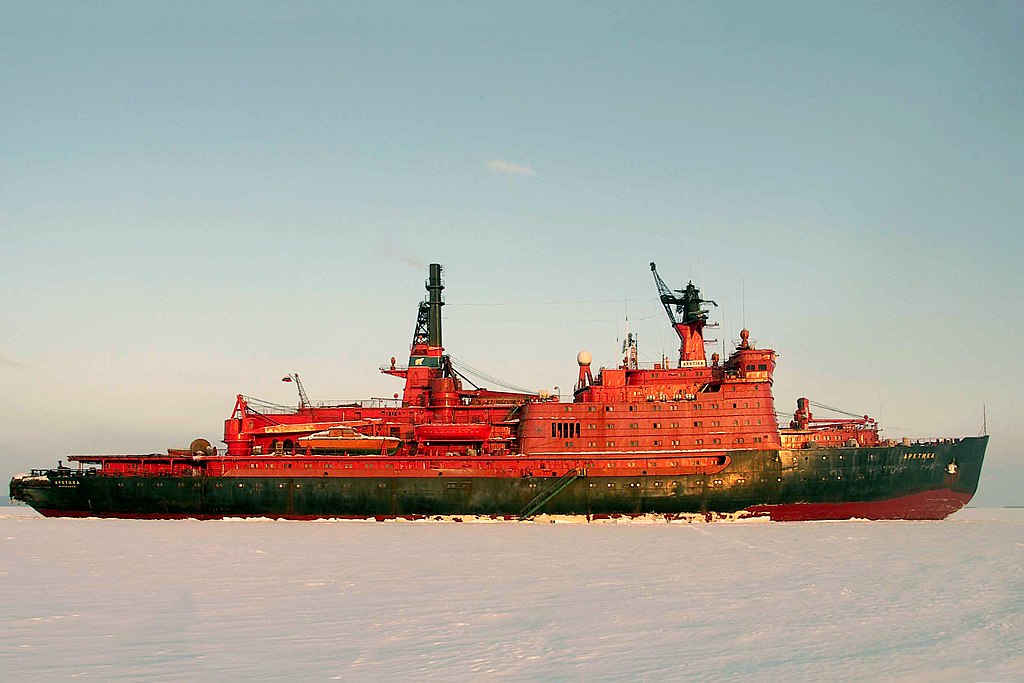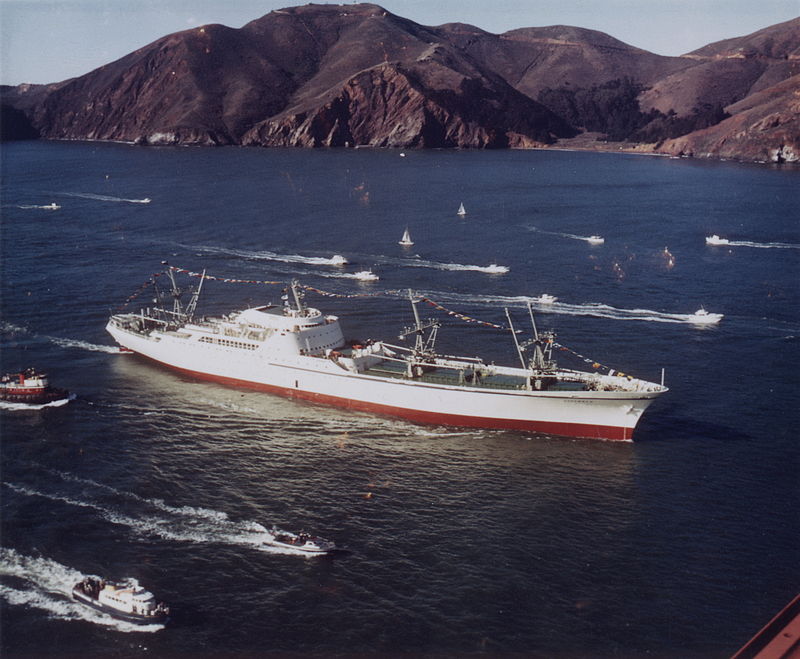The “Admiral Kusnetsov” with her four coal-fired steam turbines may count as an extreme case. What most large ships currently plowing the oceans have in common, though, is their massive consumption of fossil fuels running their extremely powerful motors (some ten up to hundreds of megawatts) and, consequently, their high output of exhaust fumes. Environmentalists have been critical of shipping for quite some time.
But there are better ways. Submarines, American aircraft carriers and the Russian icebreaker fleet already prove the concept: Nuclear reactors can power ships for years from a relatively tiny portion of uranium instead of endless streams of carbon (calorific values differ by about 2 million). In fact, the light water reactor was initially favored by Alvin Weinberg and Admiral Rickover for exactly this reason: Its suitability as a submarine power plant.
Taking up far less volume per unit of power makes the DFR especially attractive to put on a ship. This need not be limited to military vessels or special applications such as icebreakers. Giant container ships or passenger craft can be powered by DFRs — which would also deliver warm, fresh water for the pool. On aircraft carriers, the reactor could produce aviation fuel from seawater and aerial nitrogen on board.


